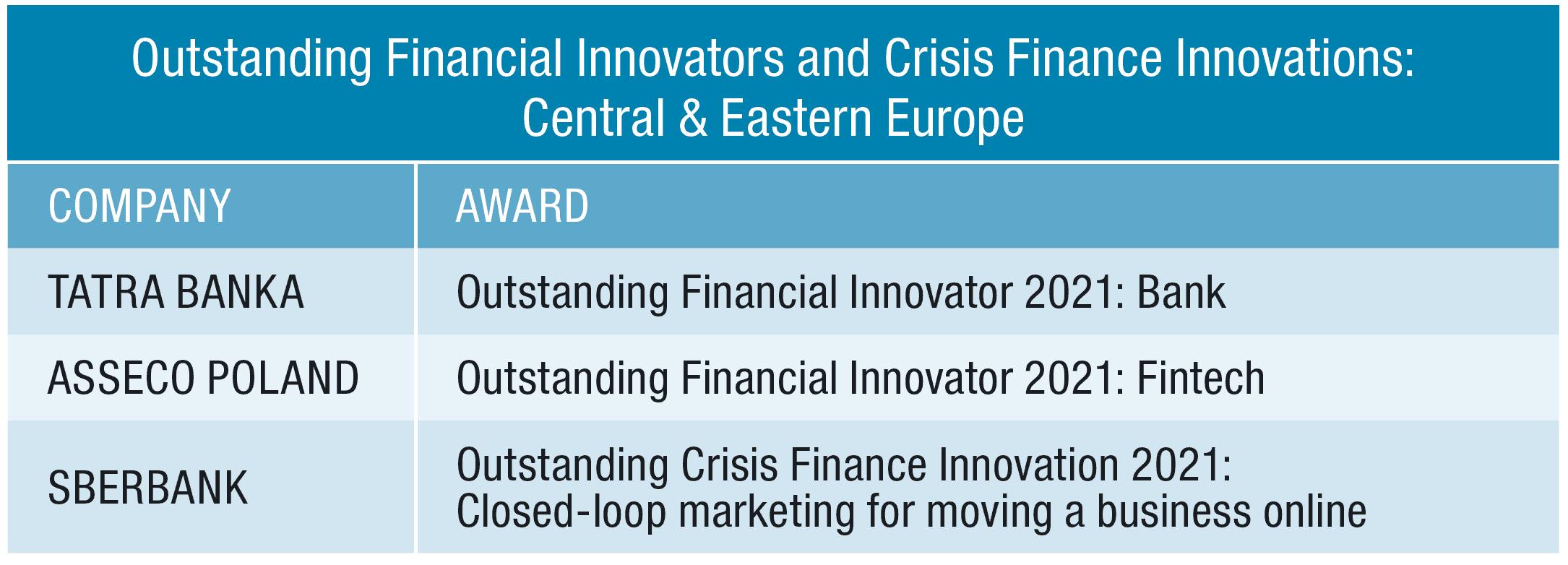The Covid-19 pandemic hastened the shift to a virtual world, with companies reaping substantial rewards.

Since countries in Central and Eastern Europe transitioned to a market economy more than a decade ago, the region enjoyed a “golden age of growth,” says McKinsey. But a lot of that growth was based on traditional industries, low labor costs, EU funding and investment from abroad.
Looking ahead, digitization looks set to provide CEE countries with the opportunity to write a new chapter in their economic growth story, with McKinsey predicting that digitization will add €200 billion ($243 billion) to GDP in the region by 2025.
The Covid-19 pandemic triggered significant progress in the digitization of processes at financial institutions, says Marta Mróz-Sipiora, product manager at Asseco Poland, one of the country’s biggest software producers and this year’s Outstanding Innovator for Fintech.
Already, 85% of its bank accounts in Poland are opened via mobile channels, she says, and 46% via the internet. “In Poland, an upward trend in online applications is also noticeable. Today, customers expect increasingly convenient solutions, in line with their communication preferences and tailored to their current needs. Thanks to modern IT solutions, we can shorten the time of searching for financial products and thus strongly support institutions that operate online.”
One of those modern IT solutions developed by Asseco Poland is its Asseco Customer Intelligence (ACI) solution, which applies machine-learning algorithms to data collected from various banking channels, such as online, voice, email and customer activities. In this way, banks can target potential new customers by identifying those most likely to sign up. They then can use this information to ensure their marketing campaigns are better tailored to customers’ specific needs.
The pandemic also saw Russian state-owned bank Sberbank rise to the occasion with its Closed-Loop Marketing (CLM) for moving a business online, earning our award for Outstanding Crisis Finance Innovation. Designed to help retail and service businesses impacted by the lockdown, the CLM includes 35 core bank products. It also offers an ecosystem of Sberbank banking services, which the bank made available to more than 675,000 organizations to help them scale quickly across Russia and other regions by setting up online commerce channels. Its algorithm tailors the solutions offered to companies based on their responses and business specifics, Sberbank says.
This year’s outstanding innovator in banking, Tatra banka, is striving for greater excellence in the customer experience it delivers. “The way we create our products and services, and the way we react in various day-to-day interactions with our clients, should not be a matter of chance,” explains Michal Liday, chairman of the board of directors and general director at Tatra banka. “We need to be ready to look for and offer our clients new services with added value, even beyond the scope of traditional banking. Our ambition is to create an experience and ecosystem that transcend the established concept of banking, to become part of our clients’ everyday life, so that they don’t want to be without us anymore.”

Talk about going beyond the realms of traditional banking: Tatra banka created a virtual digital influencer, Bejby Blue—complete with its own social media profiles on Facebook, Instagram, Tik Tok and YouTube—to attract customers from a younger demographic. The key message behind the influencer is that digital creates new opportunities. With financial literacy levels in Slovakia at less than 10%, Tatra banka also developed a series of virtual-reality games to educate high school students. Liday says having an authentic identity and company culture are key factors for success: “They are the essence of a competitive advantage. It’s something that just can’t be copied. One cannot decide to become an innovative company and expect it to happen overnight. It took us years to achieve it, with many ups and downs along the way.”



